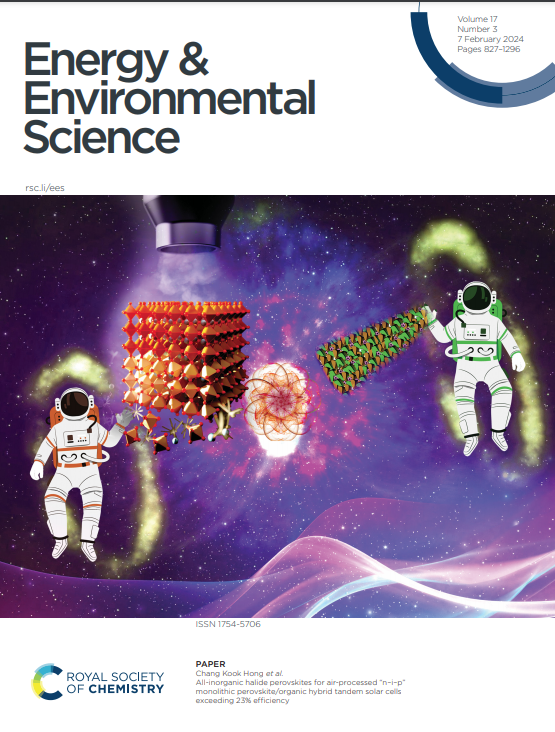Highly reversible zinc anode enabled by a trace-amount additive with pH buffering capability
IF 32.4
1区 材料科学
Q1 CHEMISTRY, MULTIDISCIPLINARY
引用次数: 0
Abstract
Both high reversibility and cycle stability for zinc anode are desirable for practical applications. However, it is a challenge to obtain both of them due to severe hydrogen evolution, corrosion and pH fluctuation. Here, a trace-amount additive (0.1wt.%), ammonium succinate, is proposed to effectively suppress above issues. The additive with high zinc absorbability not only participates in Zn2+ solvation shell, reducing H2O activity in solvation shell, but also forms adsorption layer to inhibit corrosion and regulate ion flux for uniform deposition. More importantly, strong pH buffering ability enabled by NH4+ endows batteries with high cycle stability. Therefore, unprecedent high average coulombic efficiency of 99.91% at 1mA cm−2 was obtained, and symmetrical cell can stably cycle with high cumulative capacity 6150 mAh cm−2 at 10 mA cm−2, demonstrating the feasibility for both high reversibility and cycle stability for zinc anode.求助全文
约1分钟内获得全文
求助全文
来源期刊

Energy & Environmental Science
化学-工程:化工
CiteScore
50.50
自引率
2.20%
发文量
349
审稿时长
2.2 months
期刊介绍:
Energy & Environmental Science, a peer-reviewed scientific journal, publishes original research and review articles covering interdisciplinary topics in the (bio)chemical and (bio)physical sciences, as well as chemical engineering disciplines. Published monthly by the Royal Society of Chemistry (RSC), a not-for-profit publisher, Energy & Environmental Science is recognized as a leading journal. It boasts an impressive impact factor of 8.500 as of 2009, ranking 8th among 140 journals in the category "Chemistry, Multidisciplinary," second among 71 journals in "Energy & Fuels," second among 128 journals in "Engineering, Chemical," and first among 181 scientific journals in "Environmental Sciences."
Energy & Environmental Science publishes various types of articles, including Research Papers (original scientific work), Review Articles, Perspectives, and Minireviews (feature review-type articles of broad interest), Communications (original scientific work of an urgent nature), Opinions (personal, often speculative viewpoints or hypotheses on current topics), and Analysis Articles (in-depth examination of energy-related issues).
 求助内容:
求助内容: 应助结果提醒方式:
应助结果提醒方式:


